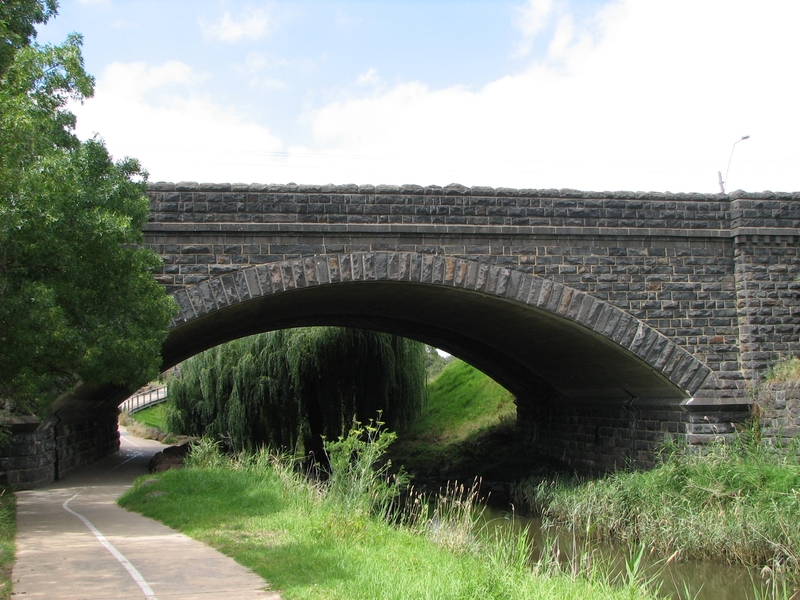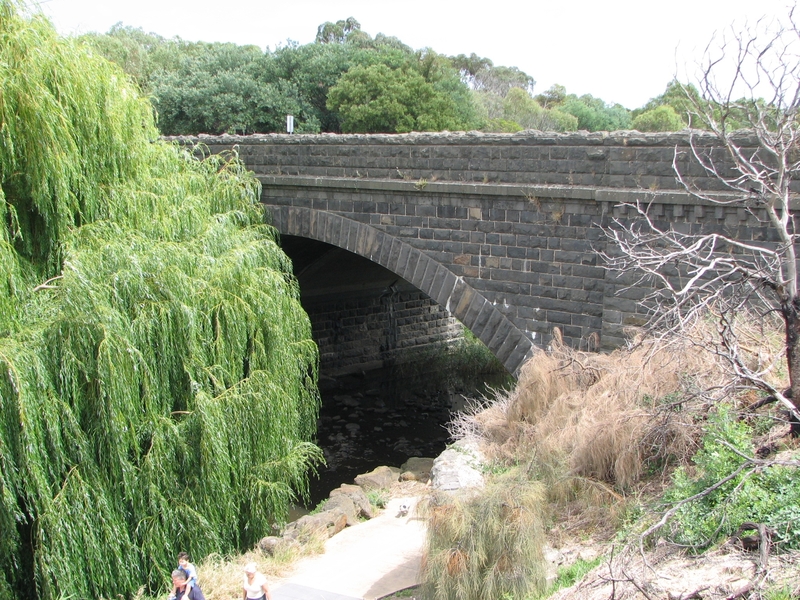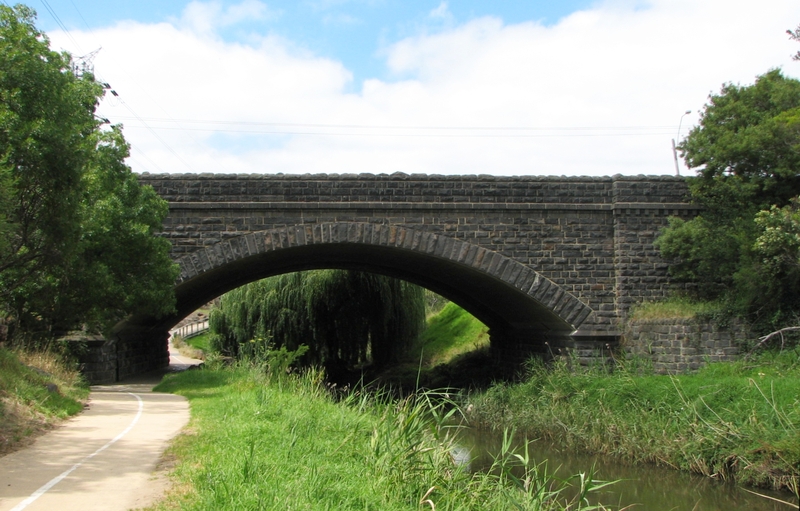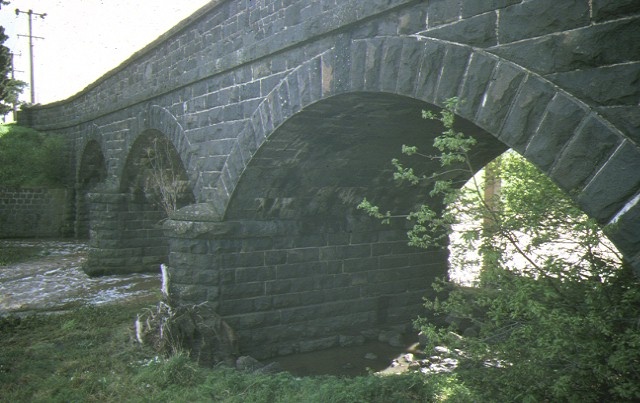BRIDGE OVER MERRI CREEK
MURRAY ROAD COBURG, MERRI-BEK CITY
-
Add to tour
You must log in to do that.
-
Share
-
Shortlist place
You must log in to do that.
- Download report





Statement of Significance
What is significant?
The Merri Creek Bridge was built by Pentridge Prison labour for the Coburg District Road Board. It was commissioned in 1870 and completed in 1871. Bluestone for the large single span bridge was extracted by prisoners from a quarry situated within the penal reserve but outside the walls of the prison. The bridge was constructed during the short administration of Claude Farie, the fourth Inspector General of Prison Establishments, and formerly Sheriff of Melbourne. Farie died in August 1870 before the bridge was completed, and his name is memorialised on the foundation stone. In 1962 the bridge was doubled in width on the north side by the Country Roads Board.
Why is it significant?
The Merri Creek Bridge on Coburg's Murray Road is of architectural, historic and scientific importance to the State of Victoria.
How is it significant?
The Merri Creek Bridge is historically significant for its association with Victoria's Pentridge Prison. It was built during a phase in Victoria's penal history when prisoners were employed outside the prison walls on quarrying and construction works around Melbourne. It is one of the few public structures built by Pentridge Prison labour that is known to survive.
The bridge is also of historical significance for its association with the short administration of the fourth Inspection General of Prison Establishments, Claude Farie (c.1817-70), whose name is carved into the foundation stone of the inside north parapet wall.
The bridge is architecturally and scientifically significant for its 25.9 metre single span, making it one of the largest, segmental, single arch stone bridges in Victoria, and the largest known bridge to be built by prison labour.
-
-
BRIDGE OVER MERRI CREEK - Permit Exemptions
General Exemptions:General exemptions apply to all places and objects included in the Victorian Heritage Register (VHR). General exemptions have been designed to allow everyday activities, maintenance and changes to your property, which don’t harm its cultural heritage significance, to proceed without the need to obtain approvals under the Heritage Act 2017.Places of worship: In some circumstances, you can alter a place of worship to accommodate religious practices without a permit, but you must notify the Executive Director of Heritage Victoria before you start the works or activities at least 20 business days before the works or activities are to commence.Subdivision/consolidation: Permit exemptions exist for some subdivisions and consolidations. If the subdivision or consolidation is in accordance with a planning permit granted under Part 4 of the Planning and Environment Act 1987 and the application for the planning permit was referred to the Executive Director of Heritage Victoria as a determining referral authority, a permit is not required.Specific exemptions may also apply to your registered place or object. If applicable, these are listed below. Specific exemptions are tailored to the conservation and management needs of an individual registered place or object and set out works and activities that are exempt from the requirements of a permit. Specific exemptions prevail if they conflict with general exemptions. Find out more about heritage permit exemptions here.Specific Exemptions:EXEMPTIONS FROM PERMITS:
Repair and replacement works to the deck surface of the bridge.
-
-
-
-
-
COTTAGE
 Victorian Heritage Register H0689
Victorian Heritage Register H0689 -
BRIDGE
 Victorian Heritage Register H1446
Victorian Heritage Register H1446 -
HM PRISON PENTRIDGE
 Victorian Heritage Register H1551
Victorian Heritage Register H1551
-
'Boonderoo', House and Outbuildings
 Greater Bendigo City
Greater Bendigo City -
'Riverslea' house
 Greater Bendigo City
Greater Bendigo City -
1 Adam Street
 Yarra City
Yarra City
-
-












